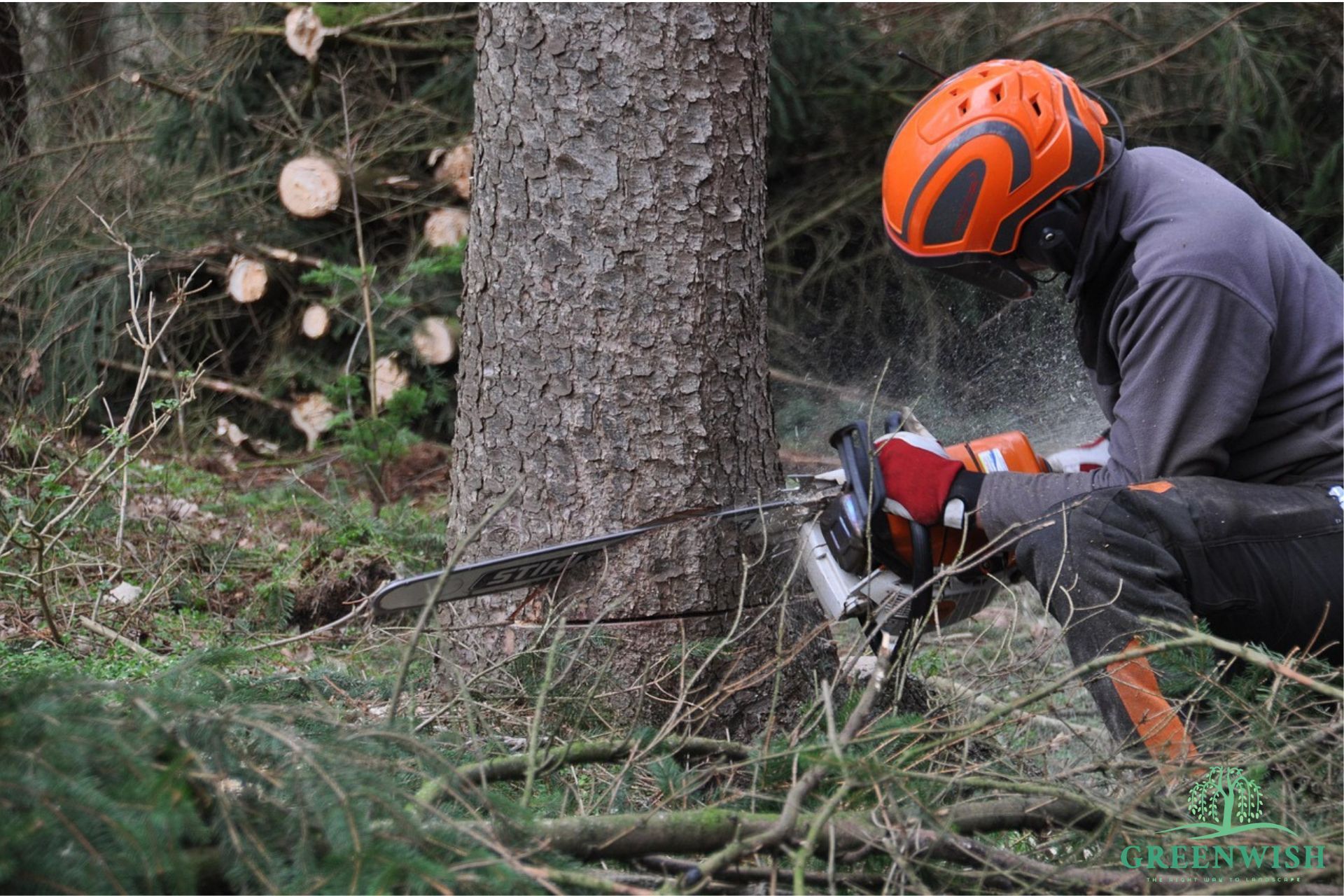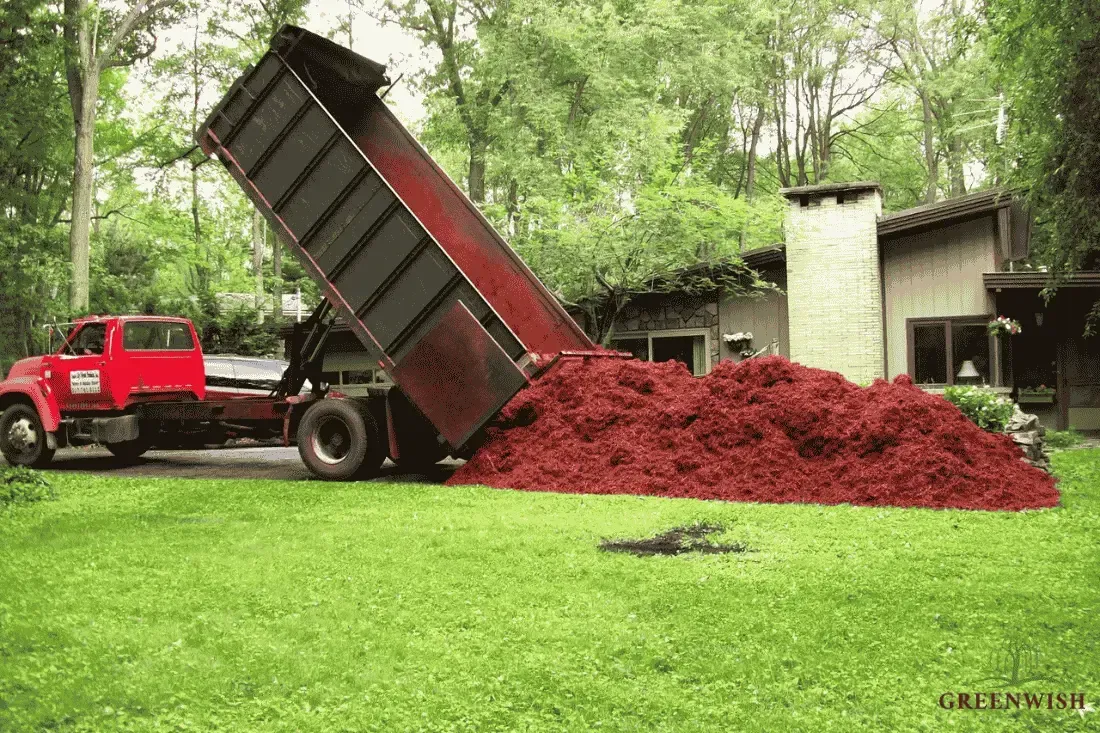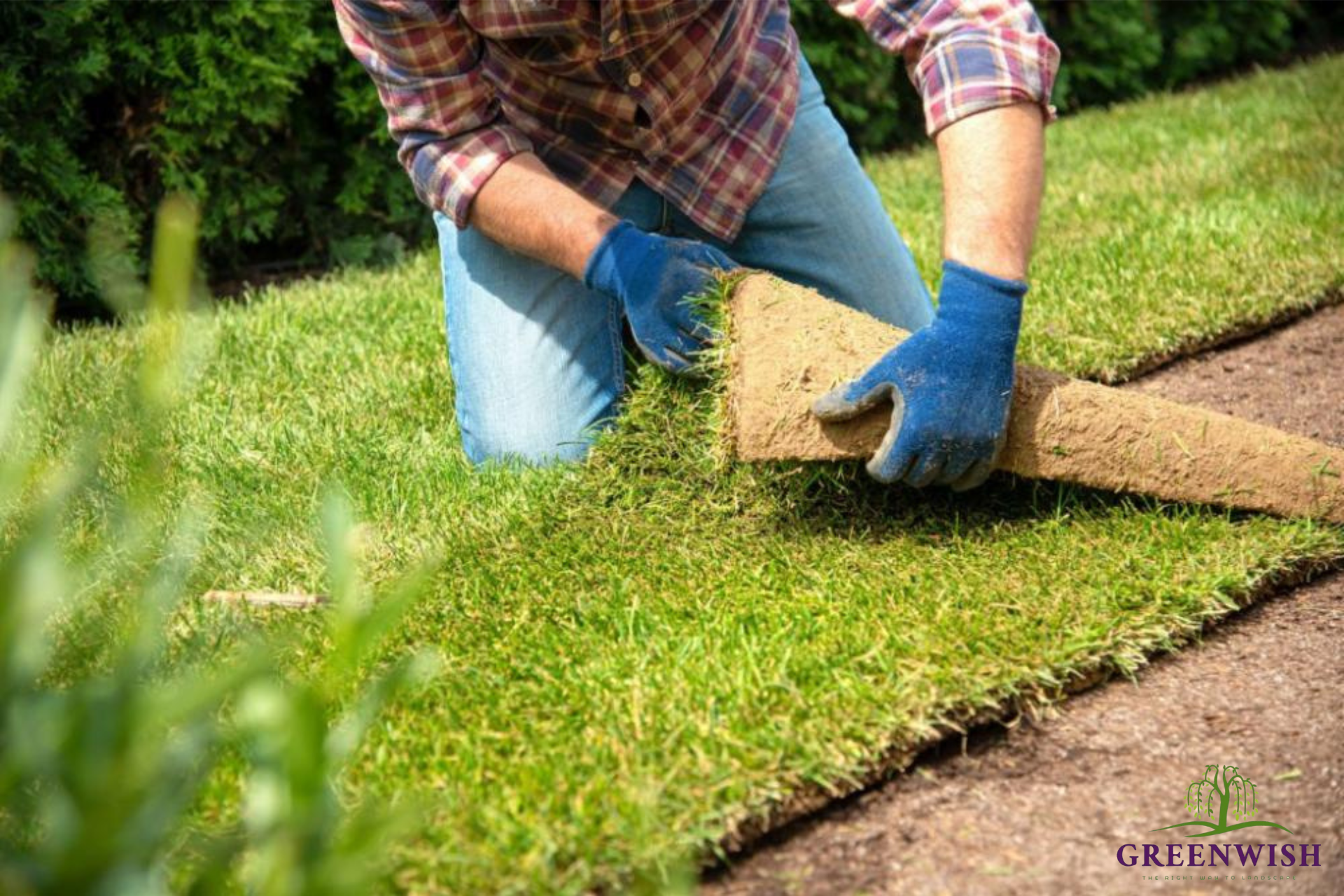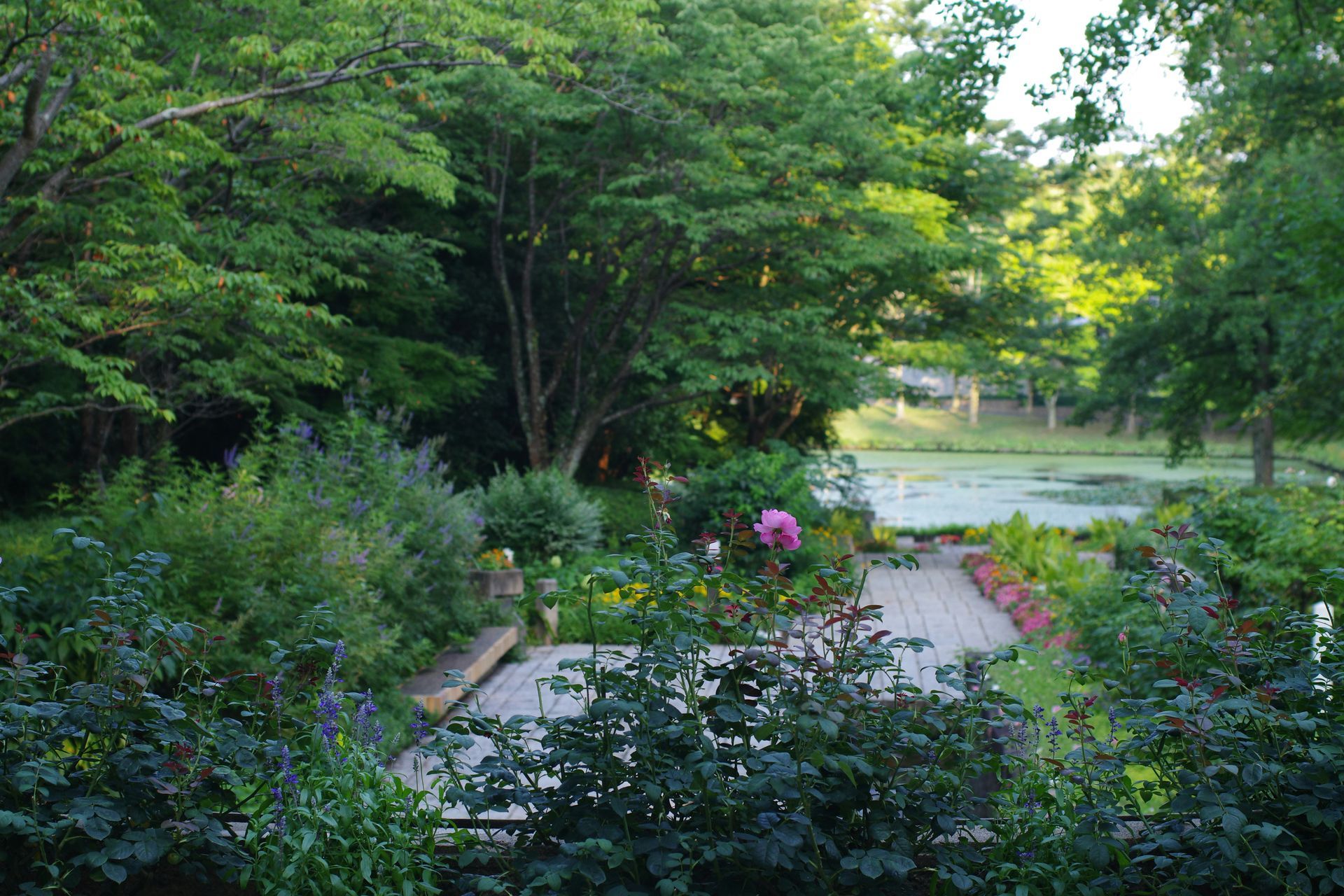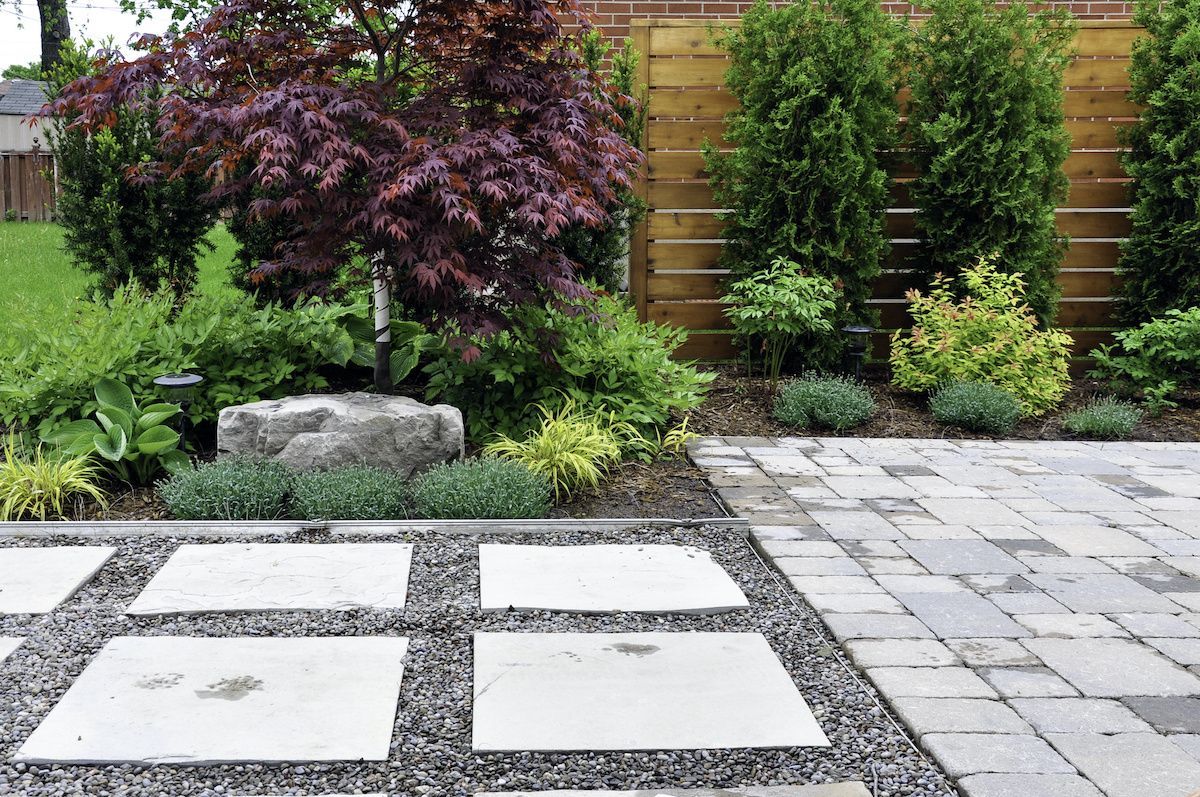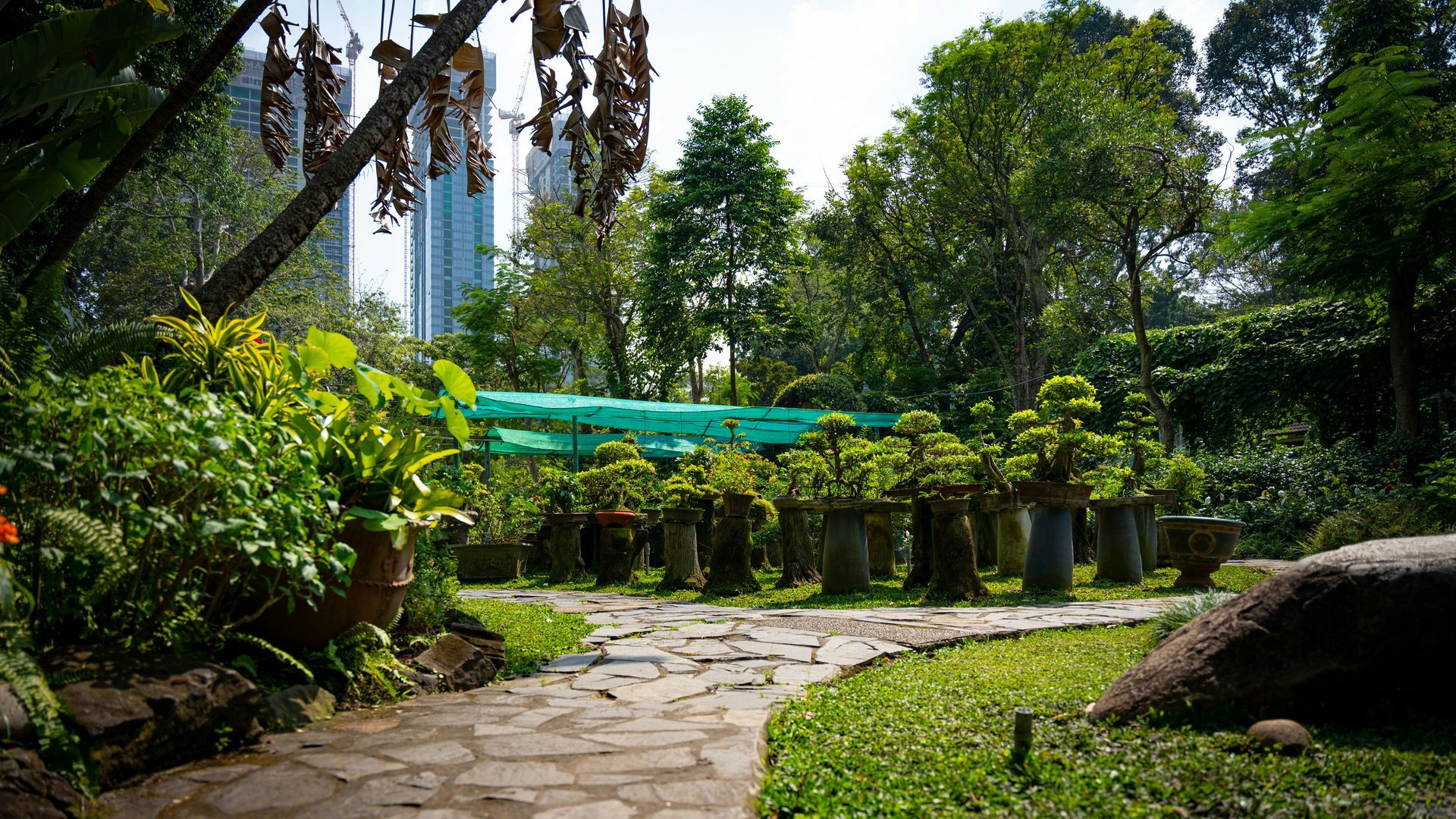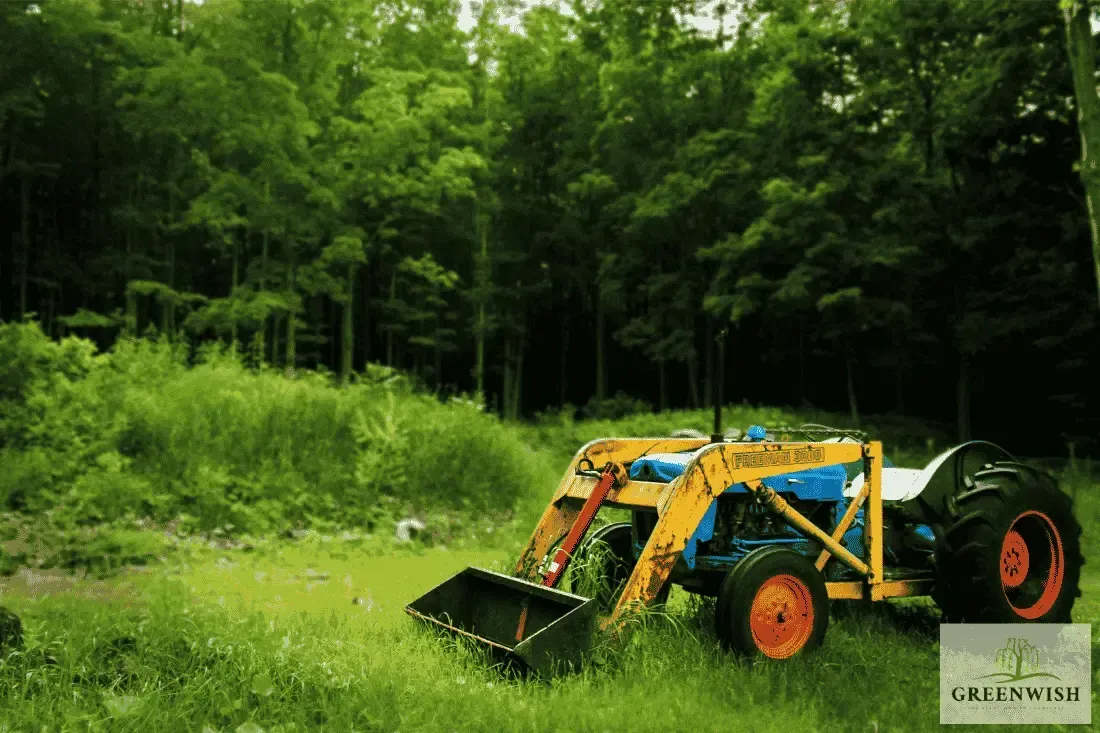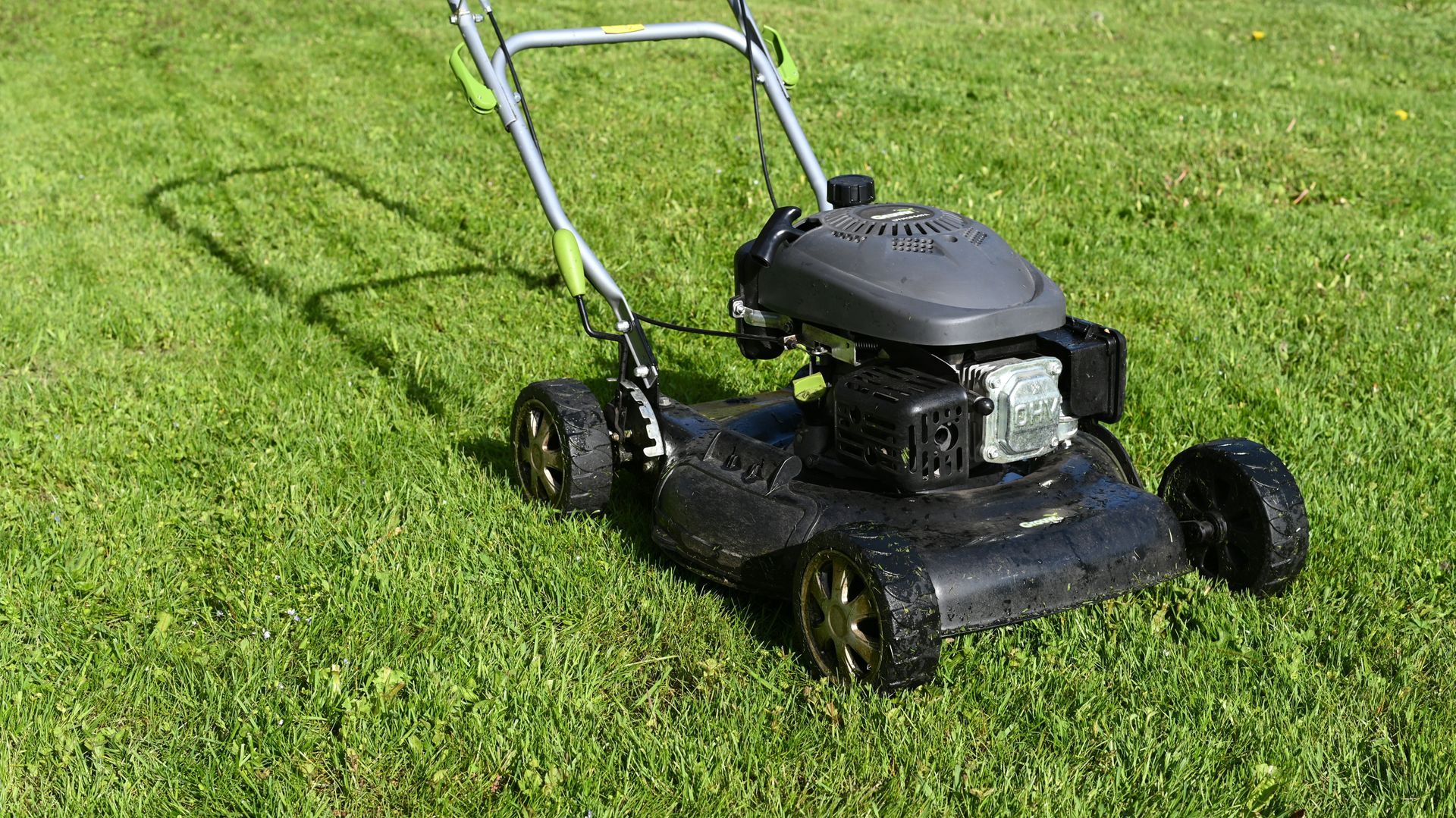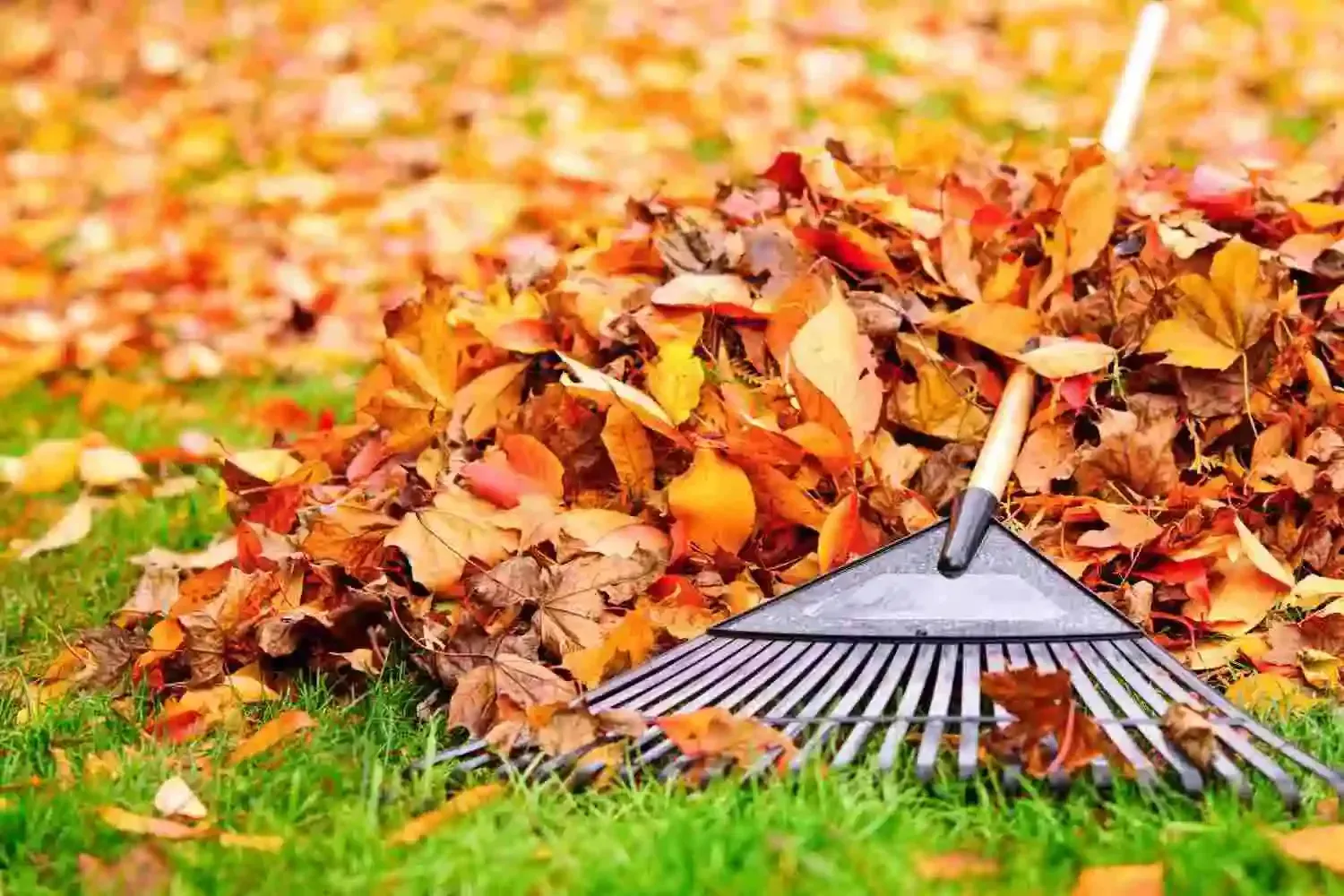21 Common Weeds in Virginia Lawns: Types, Grass Identification & Expert Lawn Care Tips for Manassas & Beyond
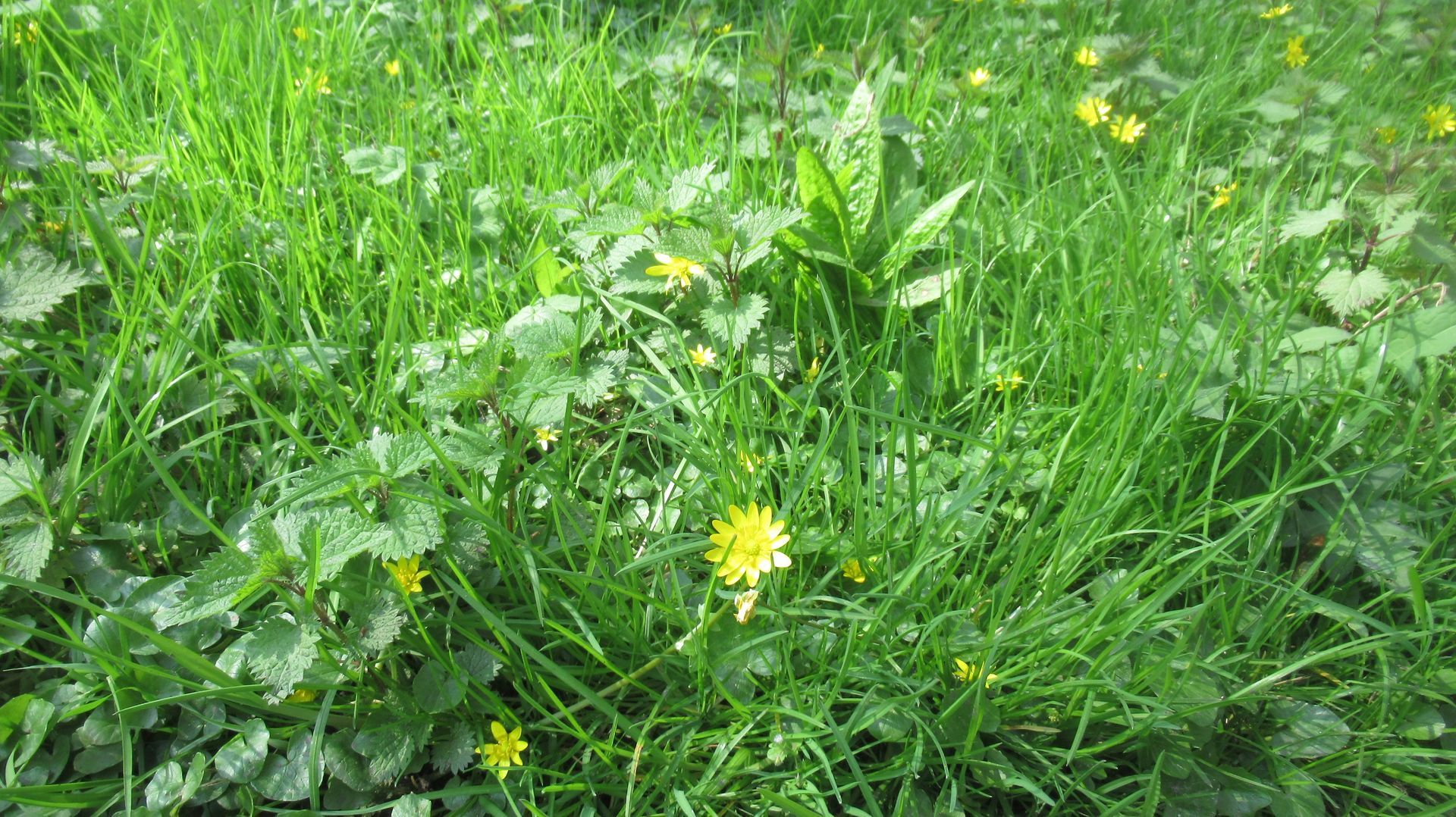
Do you dream of a healthy, nourishing life, but pesky weeds make it tough to achieve? Virginia’s humid summers and clay soil are a weed paradise. Suppose you’re struggling with these unwanted intruders in your Manassas lawn. This guide provides detailed information on the various types of lawn weeds and offers Virginia Tech-approved control methods for each season.
This blog will help you learn how to manage them while taking care of your lawn, especially in a place like Manassas, where the weather can change rapidly.
21 COMMON WEEDS IN VIRGINIA:
There are weeds of many types that may grow in your field, but you may not be able to identify most of them. We need to be familiar with them to control them, as each type has its unique identification. To help you identify and eliminate them, we’ve listed 21 common types of weeds in Virginia. Have a look at them:
- Dandelion
- Henbit
- Wild violet
- Crab Grass
- Chickweed
- Spotted Spurge
- Wild Garlic
- Buttonweed
- White Clover
- Ground ivy
- Broadleaf Plantain
- Yellow Woodsorrel
- Purple Deadnettle
- Corn Speedwell
- Hairy bittercress
- Annual bluegrass
- Yellow Nutsedge
- Lespedeza
- Common ragweed
- Foxtail
- Black Medic
1. Dandelion:
Key features:
- Scientific Name: Taraxacum
- How they look: Bright yellow flowers, white puffball seeds, jagged leaves
- Virginia Identification: First Spring weed, closes itself at night, thrives in compacted clay soil
Harm to Virginia's lawn:
- Steals nitrogen, potassium, and water
- Taproot regrows in 2 weeks
- Rapidly spreads via wind or mowers
Control:
- Fall or early spring
- Use boiling water on roots on sunny days.
- Use 3 3-inch layer of mulch.
- Spray 2,4-D herbicide (e.g., Weed B Gon).
- Use Iron herbicide (Fiesta)
Prevention:
- Keep your grass at 3.5–4".
- Patch bare spots every September.
- Aerate the Clay Soil every fall.
- Avoid spraying in summer.
- Mowing puffballs, they spread everywhere.
Pro tip: Feed your lawn in fall, not spring—it starves weeds naturally!
2. Henbit:
Key Features
- Scientific Name: Lamium amplexicaule
- How they look: Vibrant purple tubular flowers. Square stems, scalloped leaves.
- Virginia Identification: Emerges in February, grows in dense mats, minty scent when crushed, turns reddish-purple in cold, thrives in moist, under-fertilized lawns (common in Manassas Clay)
Harm to Virginia Lawns
- Form dense mats
- Explosive seed spreads
- Uses all the nitrogen
Control:
- Fall (September - October)
- Mow high (3.5-4") in winter
- Corn gluten meal (apply Sept 15)
- Hand-pull after rain
- Spray 2,4-D + dicamba mix (e.g., Weed B Gon Chickweed/Clover
- Iron-based herbicides (e.g., Fiesta)
Prevention
- Overseed fescue in September
- Apply fertilizer in fall (Oct-Nov)
- Soil pH (6.0-7.0)
- Overwater in winter
Virginia Pro Tip
Henbit is a soil spy! It reveals where your lawn needs nitrogen. Test the soil in August and apply a slow-release fertilizer.
3. Wild Violet:
Key Features
- Scientific Name: Viola sororia
- How they look: Heart-shaped leaves, purple/white/yellow flowers, low-growing perennials
- Virginia Identification: Spreads via underground rhizomes; flowers in April-May; prefers shady, acidic soils.
Harm to Virginia Lawns
- Invade the lawn with dense colonies
- regrows from root fragments.
Control:
- Fall (Oct) best time to use herbicides
- Hand digging if few clumps
- Use triclopyr to kill
Prevention
- Aerate annually
- Plant shade-tolerant fescue
- Avoid using herbicides in spring
Virginia Pro Tip
Henbit is a soil spy! It reveals where your lawn needs nitrogen. Test the soil in August and apply a slow-release fertilizer.
4. Crab Grass:
Key Features
- Scientific Name: Digitaria sanguinalis
- How they look: Star-shaped light green blades, low-growing stems radiating from the center ("crab-like”).
- Virginia Identification: Germinates when forsythia blooms (mid-March); thrives in summer, especially in compacted soil, and turns purple-brown after frost.
Harm to Virginia Lawns
- Spreads quickly & chokes healthy grass
- Dies in the fall, leaving blank spots
Control:
- Mowing high (4”).
- Pre-emergent in March
- Maintain a healthy lawn
Prevention
- Apply Pre-Emergent Herbicide
- Don’t leave bare spots
Virginia Pro Tip
Crabgrass grows earlier in warmer spots. In Norfolk or VA Beach, use herbicides by March 1. In cooler places like Shenandoah, wait until March 20.
5. Chickweed:
Key Features
- Scientific Name: Stellaria media
- How they look: star-shaped, tiny white flowers, oval leaves in opposite pairs, sprawling mats.
- Virginia ID: Winter weeds that thrive in moist, shady lawns (common under NoVA trees); forms thick patches by February.
Harm to Virginia Lawns
- Attract pests
- Spreads rapidly
- Chokes out the grass
Control:
- Late winter
- Pull by hand
- Aerate the lawn
- Mow high
- Improvised drainage
Prevention
- Trim trees for more sunlight
- Add compost to improve drainage
- Don’t overwater or leave pulled weeds
Virginia Pro Tip
Chickweed seeds can quickly spread when disturbed. To pull them out easily, do it in the morning when the soil is damp. Dispose of them in the trash instead of composting, as they might regrow.
6. Spotted Spurge:
Key Features
- Scientific Name: Euphorbia maculata
- Looks: Red-spotted oval leaves, low-growing mats, milky sap when broken.
- Virginia Identification: Summer annual; compacted soil (driveways/sidewalks); germinates after May rains.
Harm to Virginia Lawns
- Toxic sap causes skin rash/blistering
- Rapid spread
- Thrives where grass falters.
Control:
- Pre-emergent in April
- hand-pull seedlings (≤1" size).
- Spray pendimethalin (pre)
- 2,4-D (post)
- Hoeing three to four days after a rain dries out the soil surface
Prevention
- Water deeply
- Mow high
- Aerate compacted areas
- Avoid walking barefoot
Virginia Pro Tip:
Pull young plants after rain when the soil is soft. Wear gloves to protect against sap irritation, and always remove the entire taproot.
7. Wild Garlic:
Key Features
- Scientific Name: Allium vineale
- How they look: Thin hollow stems, onion odor, purple flower clusters.
- Virginia Identification: Perennial; appears early spring; spreads via bulbs/mower blades
Harm to Virginia Lawns
- Mowing releases a strong garlic smell.
- Spread quickly through the Underground bulbs
- Uses all the nitrogen
Control:
- In spring, when actively growing
- Apply herbicides
- Dig deep
- application of 2.4 D or dicamba
Prevention
- Clean mower blades
- Mow high
Virginia Pro Tip
Dig deep (4–6") to remove the bulbs to stop wild garlic from regrowing.
8. Buttonweed:
Key Features
- Scientific Name: Diodia virginiana
- How they look: Star-shaped white flowers, hairy stems, lance-shaped leaves.
- Virginia Identification: Thrives in warm climate, rich, fertile soil. Deep roots survive drought, common in Manassas' low spots,
Harm to Virginia Lawns
- Grows back from the root if left pieces.
- Resistant to weedkillers
- Damage the Lawn’s health
Control:
- June - July
- Improve drainage
- Use herbicides
- Overseed thin areas
Prevention
- Avoid partial weeding
- Avoid overwatering
- Fertilize regular
Virginia Pro Tip
Buttonweed thrives in moist environments; improve drainage and prevent standing water.
9. White Clover:
Key Features
- Scientific Name: Trifolium repens
- How they look: Trio of heart-shaped leaves, white/pink globe flowers, creeping stems.
- Virginia Identification: Thrives in low-nitrogen, thin lawns; common in Manassas backyards.
Harm to Virginia Lawns
- Attract bees
- Creates bare patches
- Spreads rapidly via creeping stems and roots
Control:
- Timing: May.
- Proper lawn care
- Removed by hand pulling
- Use herbicides
Prevention
- Aerate compacted soil
- Overseed with turf-type tall fescue in fall
- Overseed fescue in September
Virginia Pro Tip
Water weekly—strong roots outcompete clover and resist stress.
10. Ground ivy (Creeping Charlie):
Key Features
- Scientific Name: Glechoma hederacea
- How they look: low-grounded, Square stems and heart-shaped flowers, scalloped-edged leaves
- Virginia Identification: Flowers in spring, Forms dense mats in shade; thrives in moist, acidic soils (common under NoVA trees); strong minty odor when crushed
Harm to Virginia Lawns
- produces chemicals that damage other plants' growth
- Spreads by creeping stems
- Toxic for animals if digested.
Control:
- Fall or spring
- Use of herbicides
- Killed by borax in solutions
- Hand weeding
- Maintain a healthy, dense lawn
Prevention
- Mulch the lawn
- Increase the reach of sunlight
- Use chemical control
Virginia Pro Tip
Pull, then repeat! Manual removal is most effective when done every few weeks, just before the plant flowers.
11. Broadleaf Plantain:
Key Features
- Scientific Name: Plantago major
- How they look: Ribbed oval leaves, tall seed spikes, and low-growing weed rosettes.
- Virginia Identification: Thrives in clay; leaves have parallel veins; Spring through fall across Virginia
Harm to Virginia Lawns
- Thick taproots steal water and nutrients,
- Attract rust fungus.
Control:
- Fall (October)
- Maintain tufgrass
- Use mulch
- Use preemergent herbicides like isoxaben, flumioxazin, or indaziflam
- Treat with 2,4-D or triclopyr
- Apply preemergents
Prevention
- Aerate your lawn
- Fill the soil’s low spots
- Topdress with compost
- Mow high (3.5–4")
- Avoid overwatering
- Apply preemergent herbicide in spring/fall
Virginia Pro Tip
Broadleaf Plantain is well known for its medicinal uses and its ability to heal wounds. However, for your lawn, if you have wet soil, aerate and overseed to promote a healthy lawn and reduce their presence.
12. Yellow Woodsorrel (Oxalis):
Key Features
- Scientific Name: Scientific Name: Oxalis stricta (Common)
- How they look: Leaflets like heart-shaped, 5 petals bright yellow flowers, and explosive seed pods.
- Virginia Identification: Spring to early fall, thrives in moist, partially shaded temperatures; invades disturbed soil. Leaves fold at night or when touched.
Harm to Virginia Lawns, kidney damage if ingested.
- Quick invasion
- Forms dense mats in thin turf.
Control:
- Hand removal of small pieces
- Use of pre- & post-emergent herbicides like: Pendimethalin, topremazone
Prevention
- Maintain turfgrass
- Mulching
- Overseed lawns
Virginia Pro Tip
Their young leaves can be used in salads, but make sure to remove them as they’re a pet hazard.
13. Purple Deadnettle:
Key Features
- Scientific Name: Lamium purpureum
- How they look: Red or purple leaves, square stems, and tubular-shaped flowers in pinkish-purple color
- Virginia ID: arrives in winter, emerges November-March; forms dense mats in fertile soils, grows in huge patches, moist soils; top leaves turn deep purple.
Harm to Virginia Lawns
- Form dense colonies
- Might be allergic to individuals
Control:
- Fall (Oct-Nov)
- Apply pre-emergent in fall
- Mow at the required height.
- Use of herbicides
Prevention
- Fix drainage in low spots
- Maintain turfgrass
Virginia Pro Tip
Deadnettle thrives in Virginia's rich soil! In Manassas, test phosphorus early in spring. If it's high, skip the fertilizer to slow weed growth and protect waterways.
14. Corn Speedwell:
Key Features
- Scientific Name: Veronica arvensis
- How they look: Looks: Tiny blue flowers, heart-shaped seed pods, hairy oval leaves in opposite pairs.
- Virginia Identification: Winter annual; low-growing (1-3"); invades thin, sandy soils (common in coastal VA); blooms in March-May
Harm to Virginia Lawns
- Forms colonies by spreading seeds
- Blocks grass growth
- Explosive seed spreads
- Uses all the nitrogen
Control:
- Late winter (Feb)
- Use herbicides
- Mow high
Prevention
- Spread a layer of compost
- Avoid Overwater in winter
- Full aeration
Virginia Pro Tip
Speedwell thrives in poor soil! Add half an inch of compost each year to enrich the soil and naturally help prevent weeds.
15. Hairy Bittercress:
Key Features
- Scientific Name: Cardamine hirsuta
- How they look: Tiny white flowers (4 petals), compound leaves with rounded leaflets, upright seed pods.
- Virginia Identification: winter annual weeds, pods "pop" when touched, leaves are scalloped, and adapted to moist conditions.
Harm to Virginia Lawns
- Steals nutrients from the soil
- Spreads rapidly
- Takes over thin or patchy areas.
Control:
- Mowing
- Hand weeding
- Pr-emergent herbicides in the summer
Prevention
- Remove fallen leaves
- Water deeply once in a while
- Avoid walking through seed pods
Virginia Pro Tip
Bittercress seeds explode when touched! Pull weeds while the soil is damp, as this makes roots easier to remove and keeps seeds in place.
16. Annual Bluegrass:
Key Features
- Scientific Name: Poa annua
- How they look: Features pale green tufts, boat-shaped leaf tips, and white, flag-like seed heads. Reaches a height of 4-12 inches.
- Virginia Identification: diverse group, Winter annual; thrives in compacted soil (driveways/path edges); germinates after first fall rain; dies in summer heat, leaving bare patches.
Harm to Virginia Lawns
- Weakens turf
- Difficult to control
- Grows faster than turf
- Results in unattractive seed heads
Control:
- Raise the mowing height
- Apply preemergent herbicides
Prevention
- Reduce foot traffic
- Maintain turf
- Manage small patches
Virginia Pro Tip:
Annual bluegrass thrives in stressed lawns. To control it, improve drainage, raise mowing height, and reduce watering frequency.
17. Yellow Nutsedge:
Key Features
- Scientific Name: Cyperus esculentus
- How they look: Glossy V-shaped blades, yellow-brown seed clusters.
- Virginia Identification: grows 3x faster than grass; Sedges have triangular stems and dominate soggy clay (downspout zones), emitting a sweet odor when cut.
Harm to Virginia Lawns
- Invades after rainy seasons
- Difficult to remove
- Spreads in soggy soil
- Spreads all over the lawn
Control:
- June, August
- Add compost
- Hand-pull young shoots
- Don’t treat soil heavily with chemicals
Prevention
- Better drainage system
- Avoid overwatering
- Aerate and overseed
Virginia Pro Tip
You can eat the tubers of nutsedge, also known as 'tiger nuts'. Roast them without chemicals, but make sure to solarize the soil to eliminate leftover nuts.
18. Lespedeza:
Key Features
- Scientific Name: Lespedeza spp.
- How they look: Woody stems; three oblong leaflets; small pink/purple pea-like flowers. (Aug-Oct)
- Virginia Identification: Invades dry, compacted soils (driveways); survives summer droughts, grows fast after winter pruning
Harm to Virginia Lawns
- Low-growing weeds
- Spreads rapidly in thin, dry, compacted turf
- Have woody stems
- Spreads by seed
- disrupts soil nitrogen
Control:
- Hand-pull early
- Mow high
Prevention
- Proper Fertilization
- Overseed bare spots
- Avoid Scalping
- Avoid overwatering
Virginia Pro Tip
Aerate compacted areas annually
19. Common ragweed:
Key features:
- Scientific Name: Ambrosia artemisiifolia
- How they look: fern-like, like finely divided leaves, yellow-greenish small clusters at the top,
- Virginia Identification: Summer annual; seeds produce a large amount of pollen. Plants have both male and female flowers. Mature seeds by October, grows in disturbed areas.
Harm to Virginia lawn:
- Makes wind-borne pollen, causing hay fever.
- Release harmful chemicals near plants.
- Highly invasive
- Spreads rapidly
Control:
- Manual Control
- Hand-pull young plants (wear gloves)
- heavy mulch
- Use 2,4-D or dicamba in early summer
- Apply per-emergent, prodiamine (Barricade) or corn gluten meal
Prevention:
- Apply per-emergent herbicides
- Maintain healthy turfgrass
- Treat them early
Virginia pro tip:
Control ragweed early, before it flowers in late summer, to prevent the release of pollen and seeds that trigger allergies. For these Virginia weeds, use per-emergent in spring with mulch and dense planting for lasting prevention.
20. Foxtail:
Key Features
- Scientific Name: Setaria spp
- How they look: upright clumps with flat, hairy leaves and bottlebrush-like seed heads in colors like yellow, green, or giant, often found in dry areas.
- Virginia Identification: Thrives in thin, drought-stressed turf (common in NoVA's clay soils during July heatwaves).
Harm to Virginia Lawns
- Drought competitor
- Rapid spread
Control:
- Apply pendimethalin
- Mow properly
Prevention
- Mow high
- Water deeply
- Overseeding
Virginia Pro Tip
Foxtail loves bare spots—thicken turf with fall overseeding and apply spring pre-emergents early.
21. Black Medic:
Key Features
- Scientific Name: Medicago lupulina
- How they look: three oval leaflets, tiny yellow pea-like flowers densely clustered that resemble a mini ball.
- Virginia Identification: Dry, compacted weeds in Virginia, low-nitrogen soils (Manassas clay)
Harm to Virginia Lawns
- Creates uneven turf
- Attract bees
Control:
- Late spring through early summer
- Mow regularly
- Healthy turf grass
- Hand pulling from wet soil
- Use of herbicides
- Aerate the soil
- Add compost
- Use Iron herbicide (Fiesta)
Prevention
- Mow high
- overseeding
Virginia Pro Tip;
Water deeply so that black medic doesn’t thrive in dry soil.
Safety tips for different types of lawn weeds:
- Wear gloves.
- Use goggles and a mask when using herbicides
- Avoid touching unknown weeds
- Use a guide to accurately identify weeds before treating them.
- Always read herbicide labels (both synthetic and organic)
- Opt for low-toxicity options, such as Fiesta iron herbicide.
Keep children and pets away from treated areas until they are dry or as advised.
Questions asked related to different kinds of weeds.
What are the most common types of weeds?
The most common lawn weeds in Virginia include dandelions, clover, crabgrass, spotted spurge, and common ragweed. They thrive in our humid climate and clay soils (especially in Manassas).
These various types of weeds infest lawns, gardens, and roadsides.
What are the three general types of weeds?
Different types of weeds fall into three main categories, based on their lifecycle and structure.
Broadleaf Weeds: They have wide, flat leaves and are often visible with flowers.
Grassy Weeds: You can call them imposters; they blend with the grass in your lawn without you knowing it.
Sedges: They are also grass-like but with a triangular stem that grows in wet or compacted soil. They cause more damage.
What weeds to avoid?
It’s better to stay away from these Virginia Weeds:
- Spotted spurge (sap burns skin)
- Thistles (spines puncture skin)
- Poison ivy (often hides in shady lawns).
Wear gloves and use tools to avoid a reaction.
What type of weeds are the most difficult to get rid of?
Some low-growing weeds that are tough to get rid of include wild violet, Ground ivy, Nutsedge, and bermudagrass.
Are there any poisonous weeds?
Yes, several poisonous weeds can be harmful to humans or pets, requiring careful treatment and precautions. Always wear gloves when handling unknown weeds, especially those with milky sap or colorful berries. Some are: poison ivy, pokeweed.
Which weeds should you not touch?
Avoid touching Poison Ivy, Wild Parsnip, Pokeweed, Spotted Spurge, Jimsonweed, as they can cause skin irritation, rashes, or even poisoning:
Always wear gloves, long sleeves, and wash thoroughly when handling these weeds in Virginia.
What are the most invasive weeds in the garden?
In Virginia, invasive garden weeds such as mugwort, bindweed, wild strawberry, Japanese stiltgrass, ground ivy, white clover, and nutsedge spread aggressively through runners, rhizomes, or seeds, quickly overtaking lawns, flower beds, and vegetable gardens. They are difficult to control, as they regrow from root fragments or resist herbicides.
What weeds are spread by runners?
Common lawn weeds in Virginia, such as ground ivy, wild strawberry, white clover, and Bermuda grass, spread by runners, allowing them to root and grow quickly across lawns. Their spreading habit makes them difficult to remove completely.
Is it bad to have weeds in your yard?
Not all weeds are bad; let clover or violets grow in low-traffic areas to support soil and bees. Remove invasive weeds like nutsedge, thistle, or spurge that harm your lawn’s health and safety. Many of the weeds are edible and hold benefits related to health, but it’s better to keep your Virginia grass lawn turf grass healthy and away from weeds.

